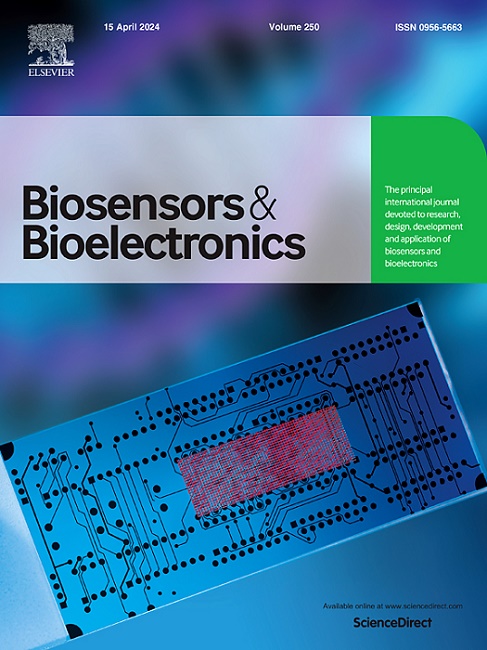术中病原菌芯片快速检测
IF 10.5
1区 生物学
Q1 BIOPHYSICS
引用次数: 0
摘要
在手术过程中,可能在手术部位发现含有病原体的化脓性液体。化脓性液体中的病原体如果扩散到血液中可引起败血症。因此,术中化脓液病原菌的检测对于指导外科医生选择手术方法和抗生素治疗至关重要。然而,目前的检测方法要么耗时,要么无法识别活病原体,限制了它们在术中环境中的临床应用。为了克服这些局限性,我们提出了一种术中病原体快速检测(IPRD)方法。该方法可在15分钟内同时检测多种病原体的存在、活菌率、种类和浓度。该方法在由两部分组成的芯片上进行:单通道部分结合人工智能辅助显微镜的活/死染色来量化活病原体,平行通道部分使用基于电孔的裂解,然后进行LAMP检测进行核酸检测。该方法经临床验证,准确率为99.01%,在103 CFU/mL的浓度下可靠地检测出白色念珠菌、大肠杆菌和粪肠球菌。IPRD方法在各种容易感染的手术中具有潜在的应用价值,可提供及时的病原信息,帮助外科医生做出手术决策。本文章由计算机程序翻译,如有差异,请以英文原文为准。
Intraoperative Pathogen Rapid Detection on Chip
During surgery, purulent fluid containing pathogens may be found at the surgical site. Pathogens in purulent fluid can cause sepsis if disseminated into the bloodstream. Therefore, intraoperative detection of pathogens in purulent fluid is critical for guiding surgeons in selecting surgical management and antibiotic therapy. However, current detection methods are either time-consuming or unable to identify live pathogens, restricting their clinical application in intraoperative settings. To overcome these limitations, we proposed an intraoperative pathogen rapid detection (IPRD) method. This method can simultaneously detect the presence, viable fraction, species, and concentrations of multiple pathogens in 15 minutes. This method is performed on a chip with two parts: a single-channel part combines live/dead staining with AI-assisted microscopy to quantify live pathogens, and a parallel-channel part uses electroporation-based lysis followed by LAMP assay for nucleic acid detection. This method demonstrated an accuracy of 99.01% in clinical validation, reliably detecting Candida albicans, Escherichia coli, and Enterococcus faecalis at 103 CFU/mL. The IPRD method has potential applications in various infection-prone surgeries, offering timely pathogenic information to assist surgeons in making surgical decisions.
求助全文
通过发布文献求助,成功后即可免费获取论文全文。
去求助
来源期刊

Biosensors and Bioelectronics
工程技术-电化学
CiteScore
20.80
自引率
7.10%
发文量
1006
审稿时长
29 days
期刊介绍:
Biosensors & Bioelectronics, along with its open access companion journal Biosensors & Bioelectronics: X, is the leading international publication in the field of biosensors and bioelectronics. It covers research, design, development, and application of biosensors, which are analytical devices incorporating biological materials with physicochemical transducers. These devices, including sensors, DNA chips, electronic noses, and lab-on-a-chip, produce digital signals proportional to specific analytes. Examples include immunosensors and enzyme-based biosensors, applied in various fields such as medicine, environmental monitoring, and food industry. The journal also focuses on molecular and supramolecular structures for enhancing device performance.
 求助内容:
求助内容: 应助结果提醒方式:
应助结果提醒方式:


